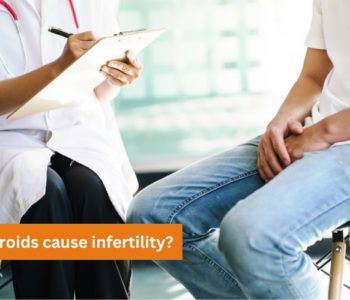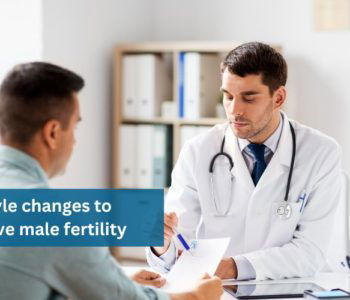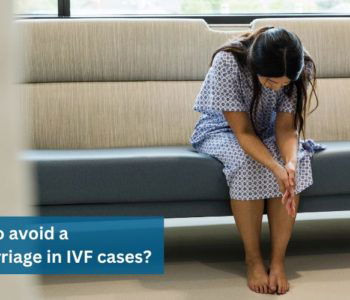Fertility treatments for blocked fallopian tubes: What you need to know
 IVF
IVF
Fertility treatments for blocked fallopian tubes: What you need…
The importance of the fallopian tubes cannot be overstated; they serve as the direct link between the ovaries and uterus in facilitating transport of an egg each month during ovulation. It’s no wonder that conception takes place within these tiny tubes— after all, this is where the sperm meets egg before embarking on its journey to the uterus for implantation.
A blockage in your fallopian tubes may lead to infertility, though there are plenty of ways to treat this condition. This article will explore what causes the blockage, symptoms, and detection of blocked fallopian tubes, along with different treatments. Surgical treatments are not available to all women, In Vitro Fertilization (IVF) can still be an option. You can also take more information about this condition from a reputed IVF centre in Punjab.
Blocked fallopian tubes- Causes
- Sexually transmitted infections (STIs) such as Gonorrhea and Chlamydia
- Tuberculosis
- Pelvic inflammatory disease (PID) which can cause the tubes to fill with fluid and adhesions, blocking the passage
- Ectopic pregnancy, where a fertilized egg remains stuck and fails to move toward the womb, leading to blockage of the fallopian tube
- Endometriosis
- Previous fallopian tube surgery
- Burst appendix or appendix infection
- Pressure effects from fibroids
Blocked fallopian tubes- Symptoms
Signs of obstructed fallopian tubes in women may include as
- Discomfort during intercourse and painful menstrual cycles.
- An unusual discharge from the vagina could indicate a blockage.
- Infertility is also a prominent indicator of blocked fallopian tubes.
If you are experiencing any of one symptom, it is important to consult with a healthcare professional at the IVF centre in Ludhiana. It is advised not to ignore these symptoms. Seek medical attention as soon as possible.
Blocked fallopian tubes- Diagnosis
- A commonly used diagnostic test for identifying blocked tubes is a hysterosalpingogram (HSG).
- In this procedure, a dye is injected into the uterus by a medical professional, followed by an X-ray to observe its flow through the fallopian tubes.
- The HSG test is typically conducted in a medical office and lasts approximately 30 minutes. It may result in mild discomfort and light cramping.
Blocked fallopian tubes- Treatment
Hydrosalpinx treatment and surgery
- For the treatment of hydrosalpinx, characterized by blockage in the fallopian tubes leading to fluid accumulation, medical professionals typically opt for either a salpingectomy or a salpingostomy.
- During a salpingectomy, a portion of the blocked fallopian tube is surgically removed, significantly enhancing the chances of successful conception through IVF compared to alternative surgical interventions.
Tubal cannulation
- Tubal cannulation represents a non-surgical solution for fallopian tube blockage, particularly those near to the uterus.
- A skilled doctor navigates a catheter through the vaginal and uterine passages to reach the affected area.
- Utilizing X-rays or ultrasound technology, the healthcare provider precisely locates the blockage during the procedure.
- The surgeon will either inflate a small balloon or implement a thin wire to eliminate the blockage.
Tubal ligation reversal
- During tubal ligation reversal, a skilled doctor at the IVF centre in Punjab delicately removes blockages from the fallopian tubes that were previously placed during a tubal ligation procedure.
- In many cases, the doctor facilitates tubal ligation reversal by removing the blocked sections of the fallopian tubes and rejoining the two ends of each tube through a procedure known as tubal reanastomosis.
Fertility after treatment of blocked fallopian tubes
- Various factors such as age, length of fallopian tubes, degree of tubal scarring, and severity of related fertility issues influence a woman’s likelihood of conceiving after undergoing treatment for fallopian tube blockage.
- Successful treatment can result in a pregnancy rate ranging from 10 to 80 percent for women in the future.
- Women with blockages near their uterus, rather than structural blockages or scarring, are more likely to achieve pregnancy post-treatment.
- Furthermore, women with fallopian tubes measuring at least 7.5 cm following tubal surgery have a higher likelihood of conception compared to those with shorter tubes.
- Women over the age of 35 may experience decreased fertility and should consider undergoing intrauterine insemination (IUI) or in vitro fertilization (IVF) following treatment for fallopian tube blockage.
IVF and blocked or damaged fallopian tubes
- In cases where women have damaged or blocked fallopian tubes that are untreatable, IVF is a recommended option for those seeking to conceive.
- IVF remains a viable solution even for individuals without fallopian tubes, as the procedure involves the direct placement of fertilized embryos into the uterus, eliminating the need for natural fertilization pathways.
Wrap up words
In cases where only one fallopian tube is blocked, there remains a possibility of natural conception or minimal medical help. Nonetheless, surgical procedures or IVF treatment may become necessary in cases where both tubes are blocked.
After undergoing treatment for blocked fallopian tubes, the possibility of pregnancy exists. The treatment you receive and the degree of your blockage will influence the likelihood of your conception or conceiving. The probability of a successful pregnancy rises when the blockage is near the uterus. However, if the blockage is located at the end of the fallopian tubes or you can say that near the ovary, success rates are least.
Attention readers, if you are someone seeking the services of a fertility specialist or need infertility treatment, visit the IVF centre in Ludhiana as soon as possible.









